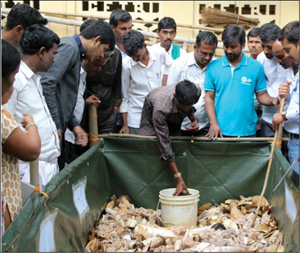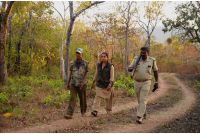Terracotta beauties

Her interest in gardening, which she inherited from her father, led her to do something different — both as a passion and as a way of caring for the earth. When she found that the market is dominated by plastic and cement pots, neither of which are good for plants, she started making terracotta planters about seven years back.
‘Maati Terracotta’ is the brainchild of Shashi Bagchi, who started creating terracotta products before she decided to specialise on terracotta gardening pots.
“I was working with an advertising agency but left the job because boredom seeped in. I was always into gardening and over the years, I noticed that the pots available in the market are only the plastic and cement ones, both of which are not good for plants. That’s when the idea of making terracotta pots came to my mind. It was a part of my course back in college, but I also took a short-term course on terracotta before I took the leap,” says Shashi.
However, due to the non-availability of a physical unit in her initial days, she started off by going to Pottery Town, which didn’t work out for her as it was a difficult task to carry the completed works. Today, she has a studio where the entire process takes place.
She says, “I have my own studio where the complete process, right from designing and manufacturing to retailing and supplying takes place. I work with landscapers, corporates, individuals and architects. The entire process of creating terracotta pots involves a lot of physical labour and I solely work towards the upliftment of potters. Currently, we are concentrating on supplying our products to Coimbatore, Hyderabad and Chennai.”
Her forte lies in making large planters (standing as tall as four feet), animal-shaped planters, garden accessories like garden sculptures, bird feeders and bird baths, lamp shades, name plates and cooking utensils. Some of her popular items, she claims, are the ‘walking legs’ pot, wall murals, the kettle-shaped wall clock and the frog garden sculpture. Shashi’s main motive, she says, is to make people aware of the eco-friendly nature of these products.
While on one hand, terracotta products are gaining popularity among people these days, on the other hand, the younger generation of potters has stopped working in this business, resulting in a decline of the pottery industry.
She reasons, “The younger generation of potters is rarely seen carrying this forward. The
reason being that they are getting educated, which is a good thing, but these youngsters also don’t want to get their hands and clothes dirty. Though they will sit and admire the works, when it comes to doing it themselves, they will move away. I believe that the support they deserve and the physical space terracotta products require (during the entire process) is limited.”
But she says that ordinary pots don’t have any aesthetic value attached to them. When it comes to terracotta pots, the scenario is different — there is demand because there are different designs that one can find, the quality is better and a terracotta planter can stay up to 12 to 15 years, carrying an aesthetic importance with it. However, the easy availability of cement and plastic pots is what hampers this business.
As for the support and feedback she gets, she says, “I am blessed to have the support of my family. They are always curious to see what I am creating next. That inspires me to constantly keep creating unique products. Many people have come back to me saying that they like the finish I give to each item. Moreover, they are also fond of the innovative designs and the expressions I give to each creation. If one notices, they can clearly see that all my animal planters have a happy face. That attracts the attention of many customers.”
source: http://www.deccanherald.com / Deccan Herald / Home> Supplements> MetroLife / by Surupasree Sarmmah, Bengaluru / DHNS / February 27th, 2016







